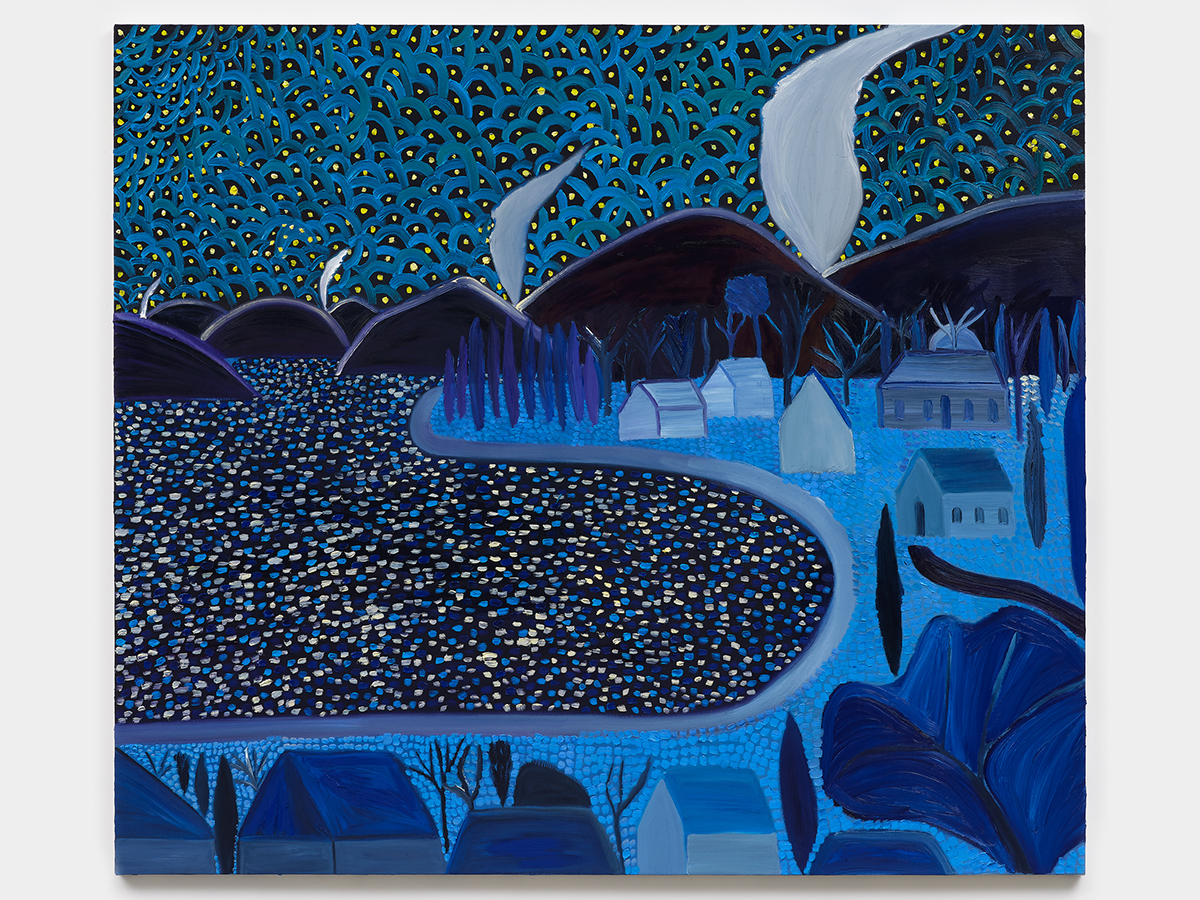
December 24, 2019
Download as PDF
View on The New York Times
On Oct. 2, the artist Matthew Wong took his life in Edmonton, Canada, where he lived. He was 35, had Tourette’s syndrome and depression, and was one of the most talented painters of his generation.
That talent shines forth in “Blue,” Mr. Wong’s posthumous solo exhibition — and only his second in New York — at Karma, a gallery in New York’s East Village. His gifts are even more convincing than in his unforgettable debut there in 2018. Clearly, the artist’s visionary fusion of form and feeling never stopped developing. True to its title, the paintings of nocturnal landscapes and interiors on view explore the infinite tones, moods and luminosities of the color blue, as do a series of gouaches displayed in Karma’s project space a few doors away from the main gallery.
Mr. Wong made some of the most irresistible paintings I’ve ever encountered. I fell for the patchworks of color and stippled patterns of his landscapes at the Frieze New York art fair of 2017, in Karma’s booth. It was a visceral experience, like falling for an unforgettable song on first listen. It was deeply nourishing: my life had been improved and I know other people who have had the same reaction. Such relatively unalloyed pleasure is almost as essential as food.
These paintings are extremely open and vulnerable. But once they lure you in, they leave you alone to explore their chromatic, spatial and psychological complexities. This mysterious journey is often signaled by a smooth pathway leading inward from a painting’s bottom edge — which is sometimes being traveled by a shadowy solitary walker. Such a presence takes a deep purple path in “Solitude,” amid dark trees, with lighted buildings looming above. In “Path to the Sea,” the road leads through dense banks of trees to a view of gray surf that reads at first like a tear in a painted backdrop, or a porthole.
Mr. Wong was born in 1984 in Toronto, Canada, the only child of parents involved in textiles and fashion who moved between Hong Kong and Toronto every few years; he was fluent in English and Mandarin. He earned a B.A. in cultural anthropology from the University of Michigan in 2007. After relocating to Hong Kong as an adult, he added an M.F.A. in photography in 2013, when he also started experimenting with ink and paper before taking up oils. Mr. Wong is sometimes called a self-taught painter, but he custom-built an exceptional classroom, studying the medium in books and museums and above all by posting images of his work on Facebook, engaging with people who responded and sometimes forming extended online friendships. These included the painters Brian Calvin and Peter Shear, as well as the art dealer John Cheim, who advised him on which brand of oil paint to use.
The paintings in “Blue” show Mr. Wong working bigger and more expansively than before, with a sense of real if unearthly light. There is less busyness and more areas of solid color, especially in the paintings of interiors. Pointillist textures have become airier or ceded to scaled-up expanses of short, boxy daubs of color, widely used to warp near and far.
In “The Old World,” they blanket the foreground, suggesting flowers but also indicate trees on a distant mountain. In “Blue Rain,” they add the bark to birch trees near a little cabin, seen through a veil of long, slanting strokes that approximate precipitation. And in “Starry Night,” these strokes — in yellow, blue and black — define the surface of a dark lake, and, in light turquoise, the adjacent shore, where the daubs resemble radiant cobblestones. The night sky is defined by overlapping turquoise arcs — Yayoi Kusama’s best-known technique — but each now has its own bright yellow dot, or star, too.
Mr. Wong’s paintings also synthesize from Chinese landscape painting, Van Gogh, Vuillard, Milton Avery, Alex Katz and Lois Dodd. But his brush strokes convey their own sense of urgency and speed, which downplays mastery for the sake of direct communication. And Mr. Wong took equal inspiration from natural forms — leaves, trees, their branches, grass, stones, bushes — translated them into a his own vocabulary of semiabstract strokes and shapes. These motifs are profuse in “Unknown Pleasures,” where a field of blue plant life is bisected by a smooth rising path leading toward a white-topped Fuji-like peak. Above, a sky of wide horizontal bands of blues and dark yellow suggests a tribute to the Color Field painter Kenneth Noland. Although other paintings in this haunting show are darker, this one greets us at the show’sstart, like a burst of song.
Over the summer and into September, Mr. Wong and Brendan Dugan, Karma’s founder, worked out every detail of “Blue” — the sequencing of works throughout the gallery. Mr. Wong insisted that his name not appear on the catalog’s cover or anywhere except the final page. Mr. Dugan remembered him saying, “I want to remove myself from the work.” After Mr. Wong’s death, Mr. Dugan and Monita Wong, the artist’s mother, decided that Mr. Wong’s unsparing attention to the show’s preparations made it a final statement. It opened it as planned on Nov. 8, with no works for sale.



